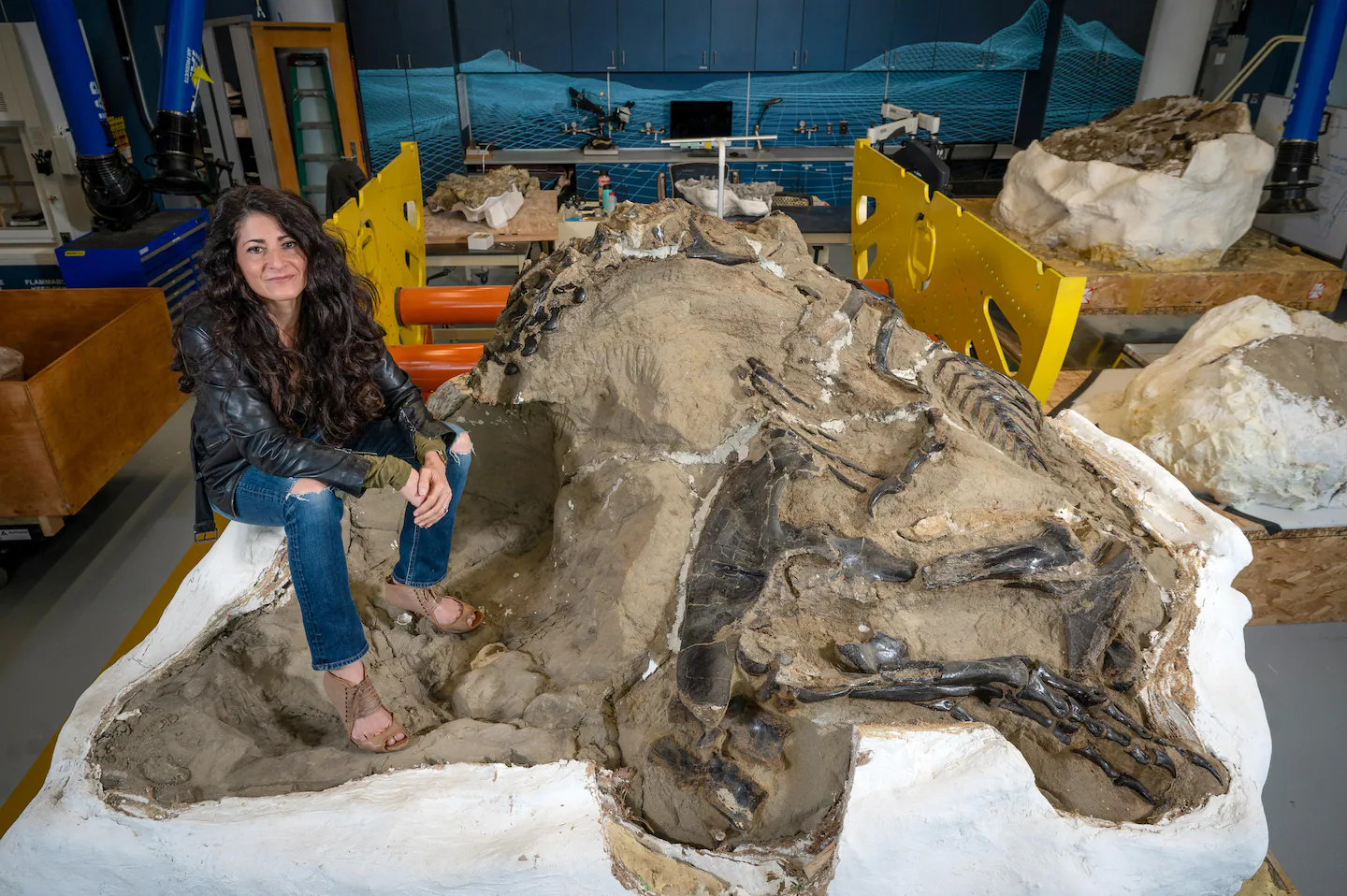Copyright The Boston Globe

A remarkably complete tyrannosaur specimen, unearthed in the middle of Montana, may finally settle one of the most contentious debates in paleontology and upend our understanding of Tyrannosaurus rex, one of the most famous extinct animals on Earth. A paper published Thursday in the journal Nature presents strong evidence that the new fossil, along with four others assumed to be teenage T. rex, are actually part of a distinct group called Nanotyrannus. The researchers discovered fine differences in the bones and evidence that the new fossil was a mature adult that had stopped growing, revealing it was not an immature T. rex. The study also fleshes out a more diverse picture of the predators of the late Cretaceous, making the case that there were two species of Nanotyrannus. For several decades, Nanotyrannus has been a paleontological third rail. After these small-bodied tyrannosaurs were first identified as a separate species in the mid-1940s, many experts came to believe they had been misclassified. They were just slender, more lightly built T. rex teenagers, they said. Upturning that notion leads to new questions: How did these different dinosaur species interact? Did they hunt different prey? What did T. rex adolescence really look like? Advertisement “The overarching mic drop of this paper is that Nanotyrannus is real, its own distinct tyrannosaur species, and that necessitates a fundamental reassessment of tyrannosaur classification and evolution,” Steve Brusatte, a paleontologist at the University of Edinburgh not involved in the new study, said in an email. “It’s wonderful when new evidence shows that some of our cherished notions — my cherished notions as a tyrannosaur researcher — are likely to be wrong. That’s science.” T. rex incites strong opinions and emotions among tyrannosaur experts and the broader dinosaur fandom alike. This apex predator is the yardstick against which all other dinosaurs are frequently measured: How big were they compared to T. rex? How fierce were they compared to T. rex? And for decades, Nanotyrannus proponents had been relegated to the margins by scientific consensus. As word of the new study began to circulate among paleontologists this week, some began to make cryptic anticipatory posts on social media. Advertisement “A bunch of us who knew this was coming have been commenting obliquely online about hiding in bunkers. Some people will be angry, others will be, ‘I told you so,’” said Thomas Holtz Jr., a paleontologist at the University of Maryland, not involved in the study, who said that he had previously been persuaded by the argument that these specimens were T. rex juveniles. “They make a better case for the reality of Nanotyrannus than anyone has so far.” Smithsonian paleontologist Charles Gilmore described a new carnivorous dinosaur from a skull found at the Hell Creek formation in Montana in a paper published in 1946, the year after he died. He described it as a species of Gorgosaurus, another tyrannosaur and slightly smaller cousin of T. rex. Four decades later, a scientific team reanalyzed the skull and published its interpretation in a paper titled “NANOTYRANNUS, A NEW GENUS OF PYGMY TYRANNOSAUR, FROM THE LATEST CRETACEOUS OF MONTANA.” Nanotyrannus lancensis was less than half the length of T. rex, from snout to tail. It was a relatively long-limbed animal. Little is definitely known about a species whose existence has been doubted for decades, but scientists have argued it would have been more gracile and cheetah-like, in contrast to the stocky, stomping brute force of T. rex. Then, paleontologist Thomas Carr of Carthage College offered a compelling rebuttal in 1999. These nanotyrannus specimens, he proposed, had a simpler explanation — they were youthful T. rex. That explanation took hold in the broader paleontology community. Scientists studying T. rex biology — its feeding habits, its maturation, and how it moved about — factored in these smaller specimens. Paleontologist Nicholas Longrich recalled a scientific meeting a decade ago when a colleague, Peter Larson, came up to him waving around two casts of dinosaur arms. In one hand was the forelimb of a T. rex. In the other was what most people in the tyrannosaur community assumed was a T. rex teenager. Advertisement “He comes up to me waving the cast at me, and he’s like: ‘Nanotyrannus is real,’” Longrich recalled. “It’s like a conspiracy theorist telling you a Bigfoot is real. Yeah, sure, Pete. Sure, it’s real.” Larson, president of the Black Hills Institute of Geological Research in South Dakota, a private company that excavates, buys, and sells fossils, has collected a lot of T. rex specimens — so many that he demurs when asked exactly how many. Is it 13 or 14? But all the way back to 2001, when he saw a putative young T. rex called “Jane,” he has been convinced that these smaller-bodied T. rex are not juveniles, but Nanotyrannus. “I was kind of like the lone soul crying in the wilderness,” Larson recalled.



